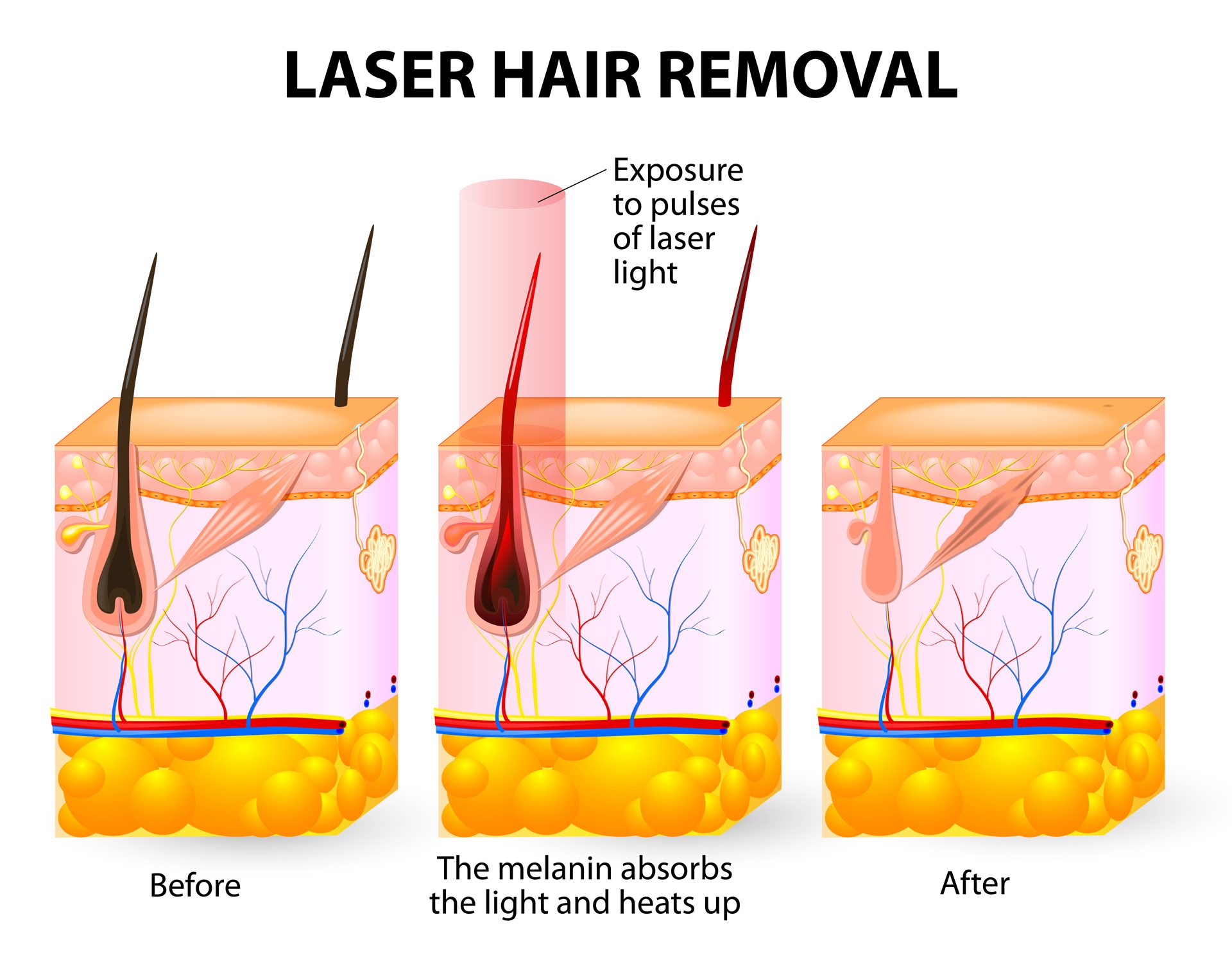There are 3 different wavelengths of light/energy most commonly used to remove hair.
The 755 nm alexandrite laser, the 810 nm (and 1,060 nm) diode laser, and the 1,064 nm neodymium:yttrium aluminum garnet (Nd:YAG) laser. The diameter of the hair, as well as the color of the skin and hair being treated determine which laser is optimal for laser hair removal treatment in a given patient.
Diode Lasers
The first truly effective lasers for removing hair were the 810 nm diode lasers. These lasers are extremely reliable and generally have a chilled sapphire tip that touches the skin and cools the skin surface. This wavelength is right in-between the 755 nm and 1,064 nm Nd:YAG lasers. It can be used on most skin types, but generally should not be used on the darkest skin types in the opinion of this author. The advantages of the diode laser are the middle wavelength, contact cooling and reliability. The disadvantages are the inability to deliver very short pulse-durations in the 3 ms range that are often used to treat thin hair, and the ability to deliver clinically relevant higher fluences over very large treatment beam diameters with fast repetition rates, as compared to other devices.

The inability to treat the darkest skin types has been overcome by some diode lasers that deliver 2 wavelengths, 810 nm and 1,060 nm, an option that was lacking from these devices for over a decade.
Alexandrite Lasers
Alexandrite lasers are commonly used to treat lighter skin-types, and can deliver extremely rapid treatments over large surface areas. The surface of the skin is cooled with a cryogen spray that evaporates rapidly cooling the skin, by forced cold air that is rapidly delivered over the skin, or by contact cooling with a chilled sapphire crystal. Alexandrite lasers deliver high fluences, or doses of laser light, in a rapid rate, with large spot sizes, and pulse-durations that range from 3 ms to much longer pulse-durations of 50 ms or longer. This enables optimized treatment of thin or thicker hair, but not in darker skin types.
Nd:YAG Lasers
Nd:YAG lasers emit 1,064 nm energy (it’s not light because we can’t see it) and are best for treating the darkest skin types. Like alexandrite lasers, Nd:YAG lasers use various means of cooling the surface of the skin from a cryogen spray that evaporates, to a cooled crystal surface, or cold forced air. Because melanin pigment absorbs best in the ultraviolet (UV) range, which is from 320 nm-400 nm, and decreases with increasing wavelength, the longer the wavelength the less melanin absorption. Using an Nd:YAG laser may seem like having your cake and eating it too, because we target melanin pigment in the hair shaft, and thus must have melanin absorption for the laser to work.
How can we go to a less melanin absorbing wavelength and still remove hair, but spare the surface of the skin? We can do this in darker skin types because the melanin is packaged differently in the skin as compared to the hair shaft. Nd:YAG lasers are not the best devices for treating light skinned people, because their hair also has less melanin pigment, making it less ‘visible’ to longer wavelength lasers like the Nd:YAG. Nd:YAG lasers are the laser of choice for treating the darkest skin types.